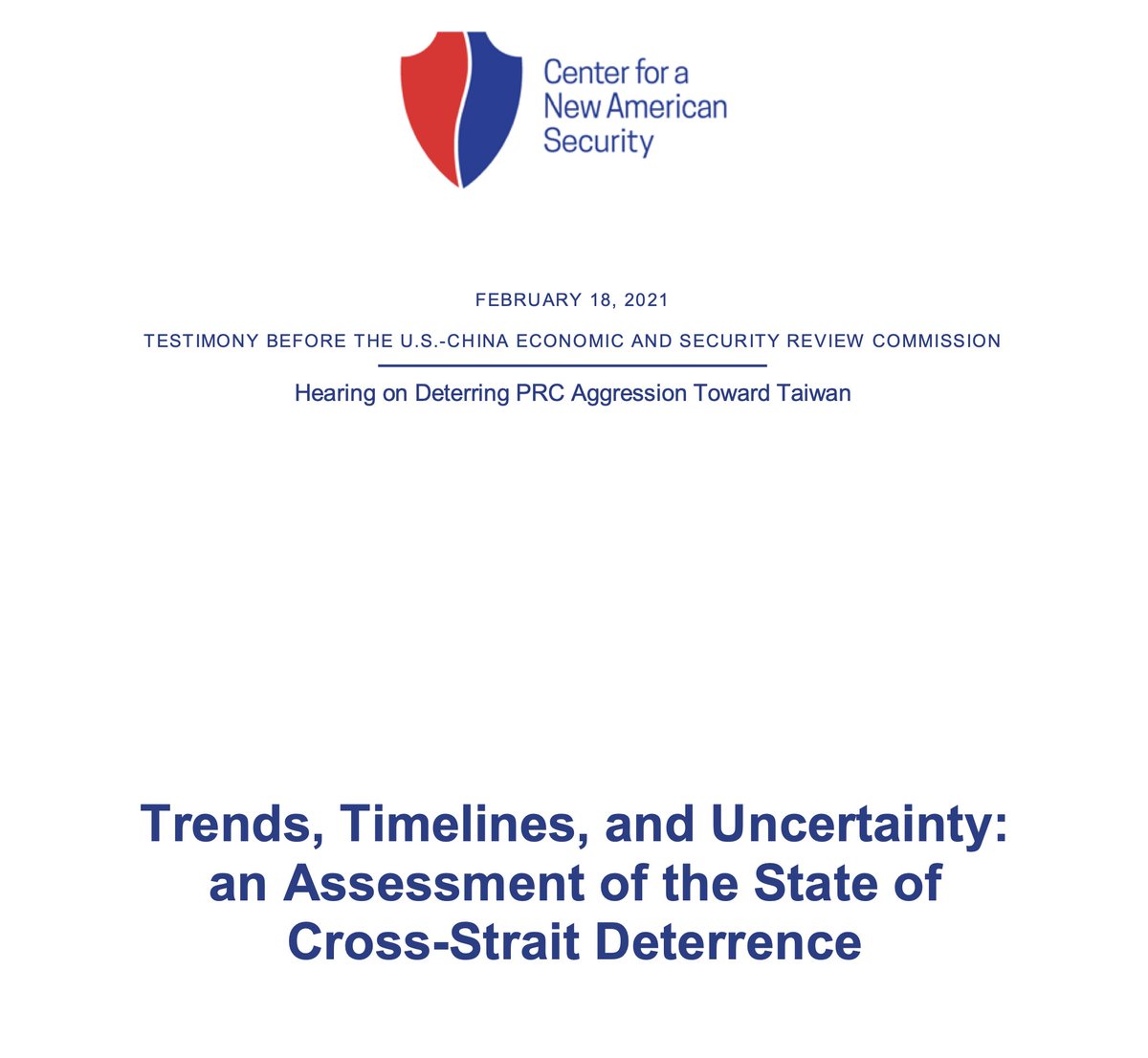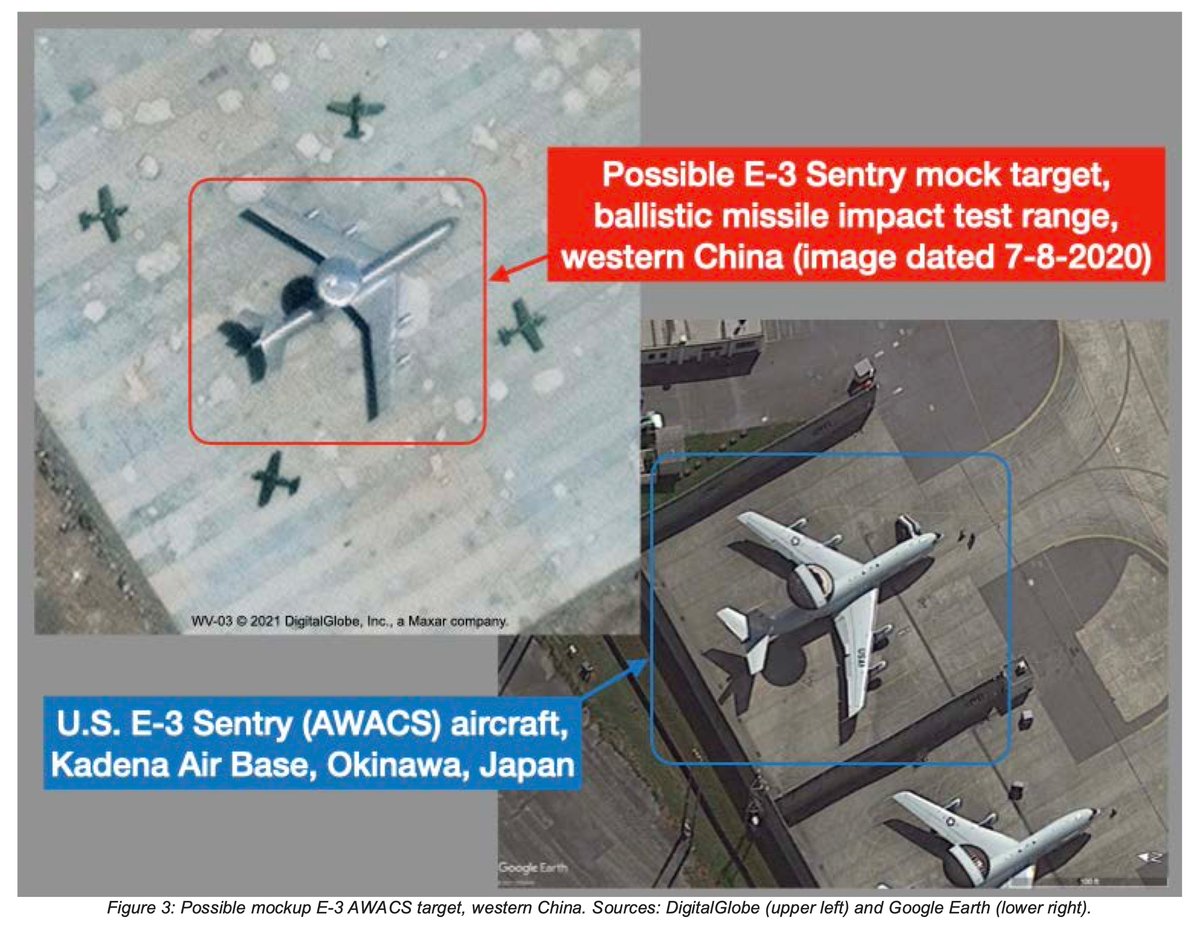
My written testimony for today's @USCC_GOV hearing on cross-Strait deterrence is now available on the commission's web site. You can see it here: uscc.gov/sites/default/…
https://twitter.com/tshugart3/status/1359895812763910144
If you've been following me for a while, you'll see some familiar themes, as well as some new material and information. 

My overall assessment of the state of cross-Strait deterrence, which is underlaid in large part by the associated military balance, is that we're entering a period of deep uncertainty. 

This is in contrast to the situation of in the past, when I would have predicted failure for the PRC in any cross-Strait military aggression. It's also in contrast to the situation, absent changes in current trends, that we seem headed towards: PRC military domination of Taiwan. 

The trends that concern me most are not those directly tied to comparisons across the Strait. What I'm most concerned about is China’s development of broader regional capabilities clearly intended to counter or deter a U.S. intervention to defend Taiwan.
These broader counter-intervention capabilities are most visible in the form of China’s deployment of large numbers of capable precision-strike Intermediate Range Ballistic Missiles (IRBMs), its growing long-range bomber force, and its rapidly growing blue-water navy.
I've explored China's precision-strike IRBM force here before, in this thread:
https://twitter.com/tshugart3/status/1303435692068999168
With some additional news here:
https://twitter.com/tshugart3/status/1303435692068999168
One new piece of information that I provided to the Commission was this: it appears, based on open-source imagery, that China's missile forces may be developing the ability to strike specific high-value aircraft on U.S. air bases in the region.
This previously-unpublished image, from the missile impact range in western China, shows what appears to be a mock target specifically designed to imitate a parked E-3 Sentry airborne early warning and control aircraft (AWACS). 

IMO the use of a mock target to represent a specific U.S. aircraft type (no one else in the region operates them) may indicate the development of a warhead with the capability to recognize and home in on specific aircraft, rather than having to blanket an entire airfield. 

It also provides yet another indicator that China's missile force is practicing, quite specifically, attacks on U.S. bases in the region. My colleague Javier Gonzalez and I talked about this in detail in our report "First Strike" in 2017:cnas.org/publications/r…
The next topic, on China's growing bomber force, is one that I've also discussed here:
https://twitter.com/tshugart3/status/1327390104738951168
And finally, I address China's very rapidly growing navy, which I addressed here:
https://twitter.com/tshugart3/status/1306311601968955394
For the remainder of my detailed assessment and policy recommendations, please go take a look! uscc.gov/hearings/deter…
• • •
Missing some Tweet in this thread? You can try to
force a refresh


















